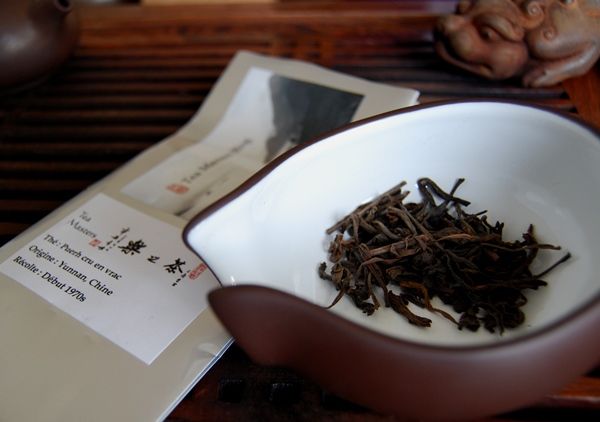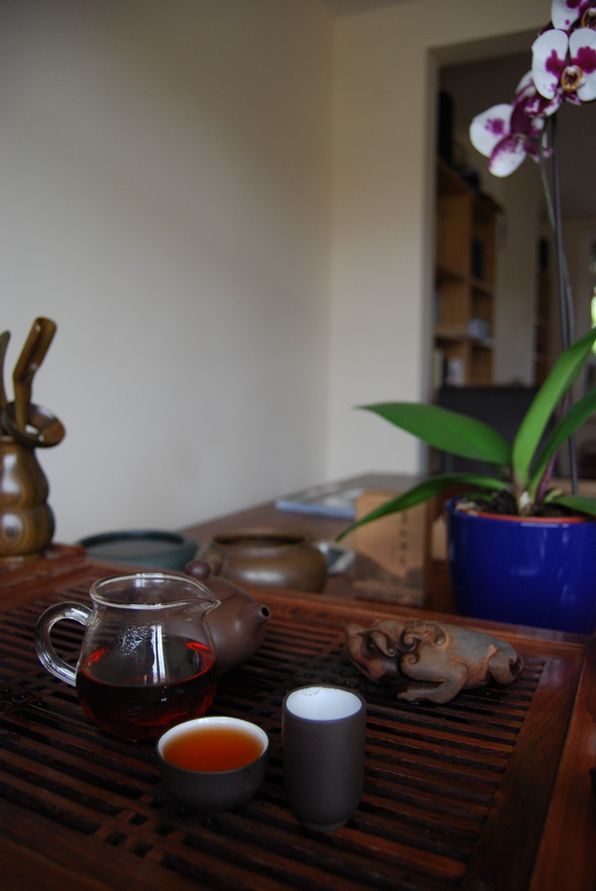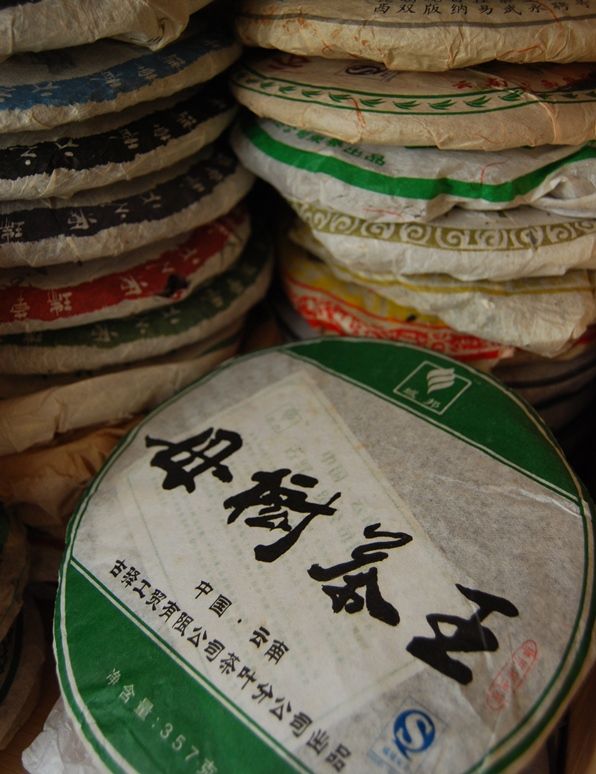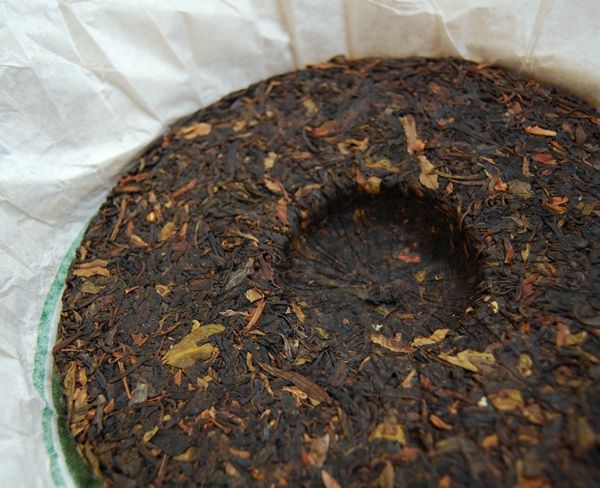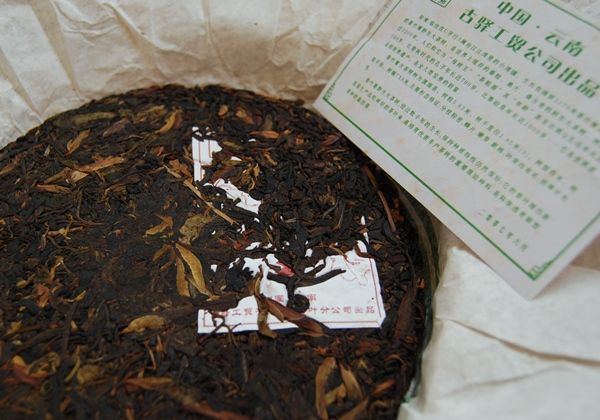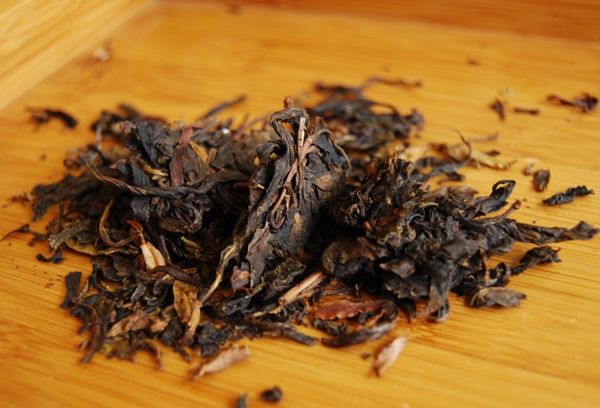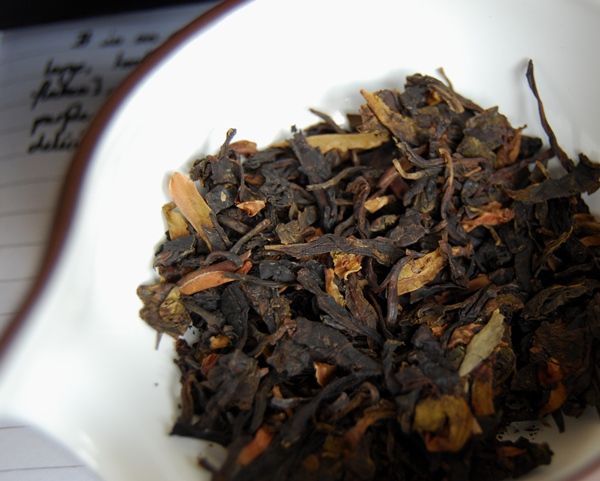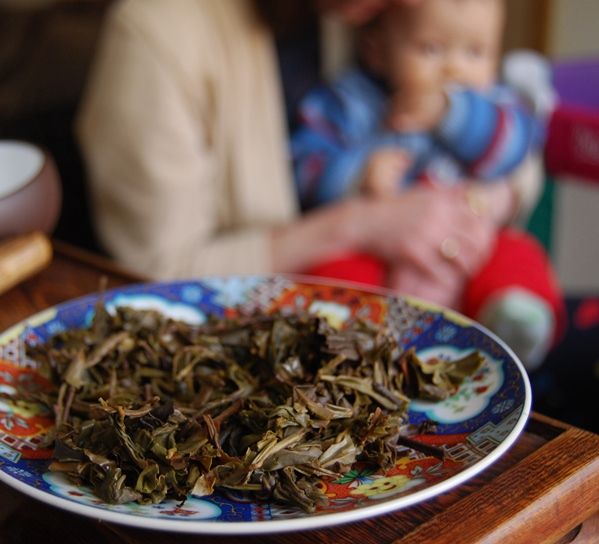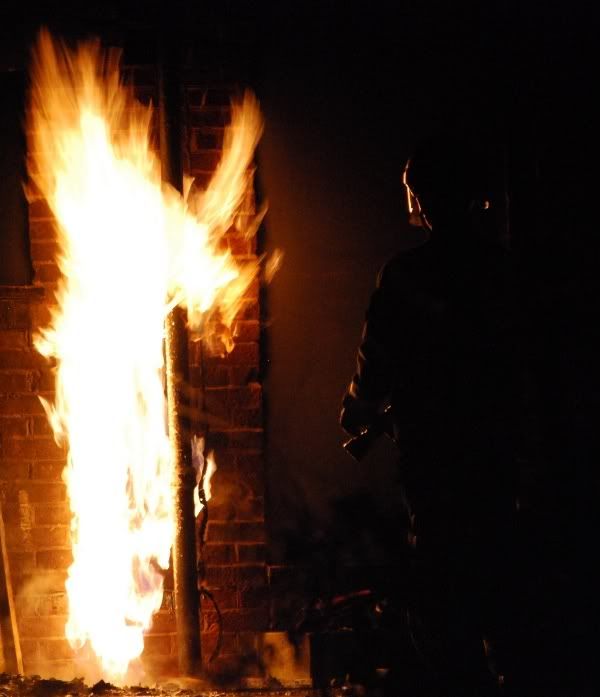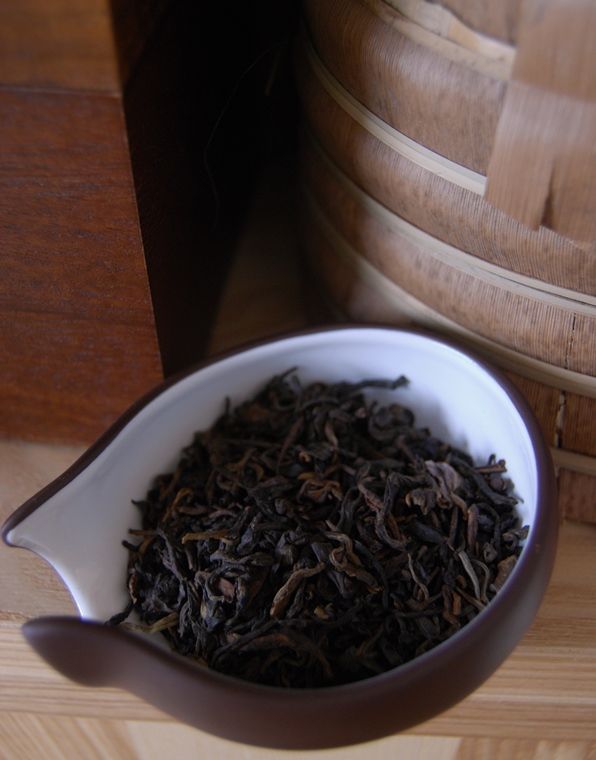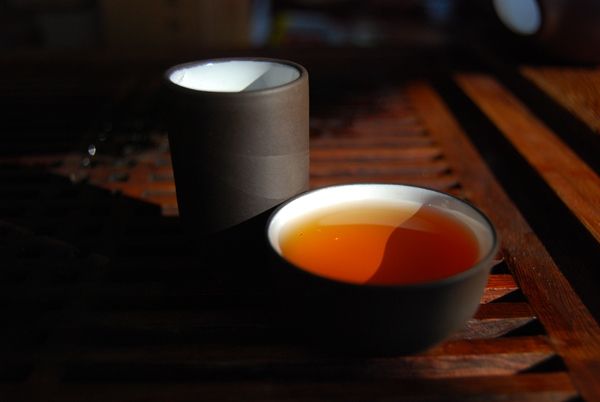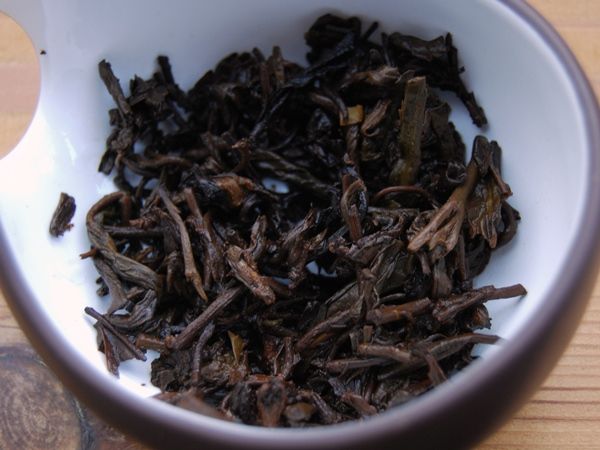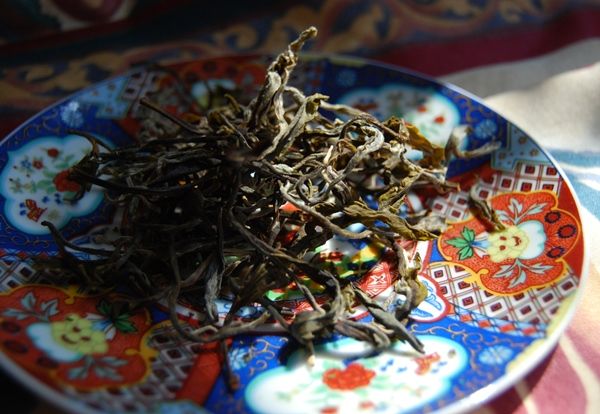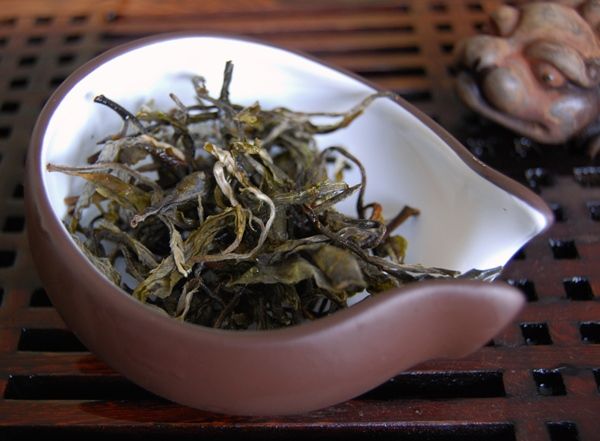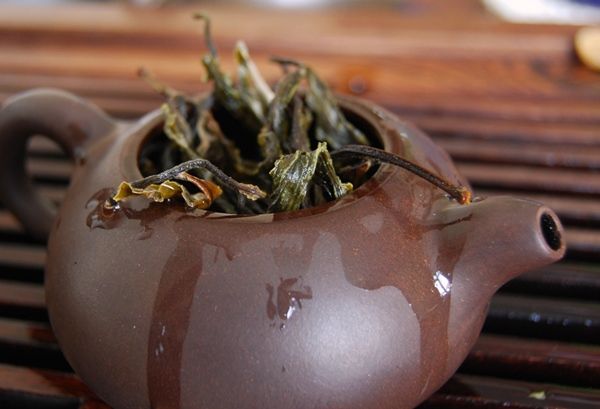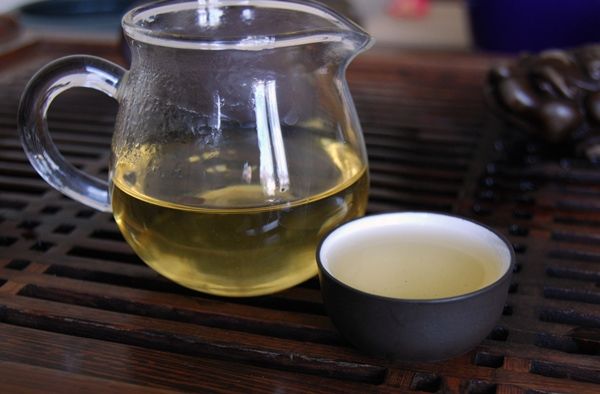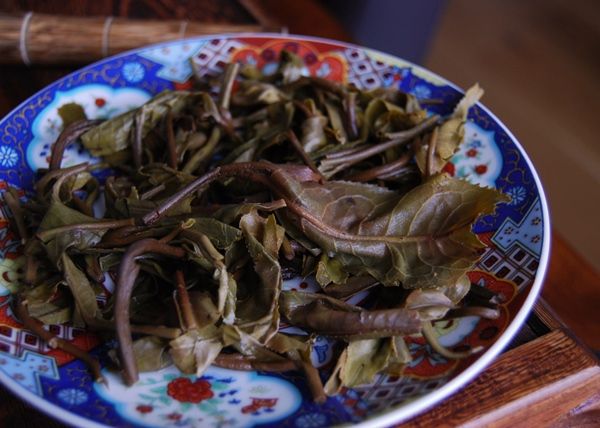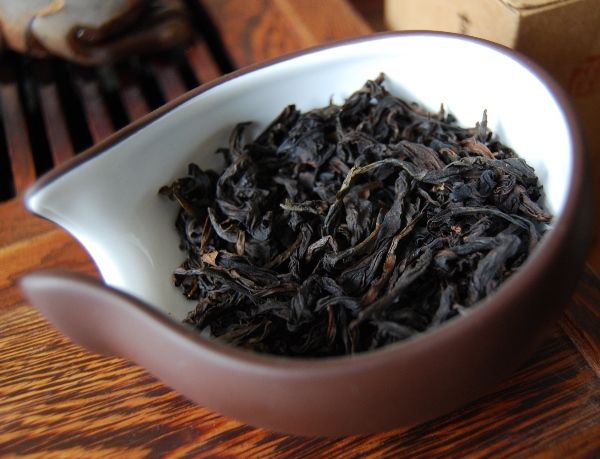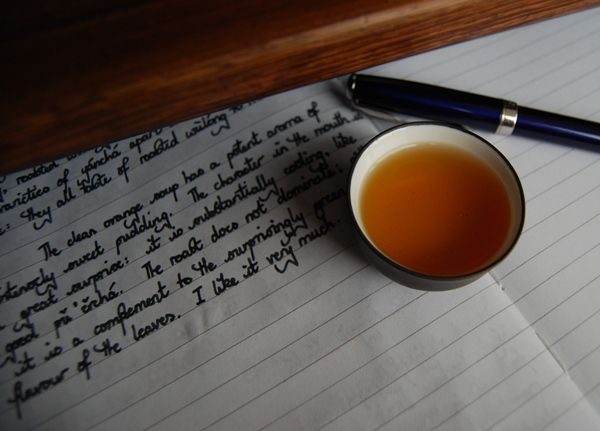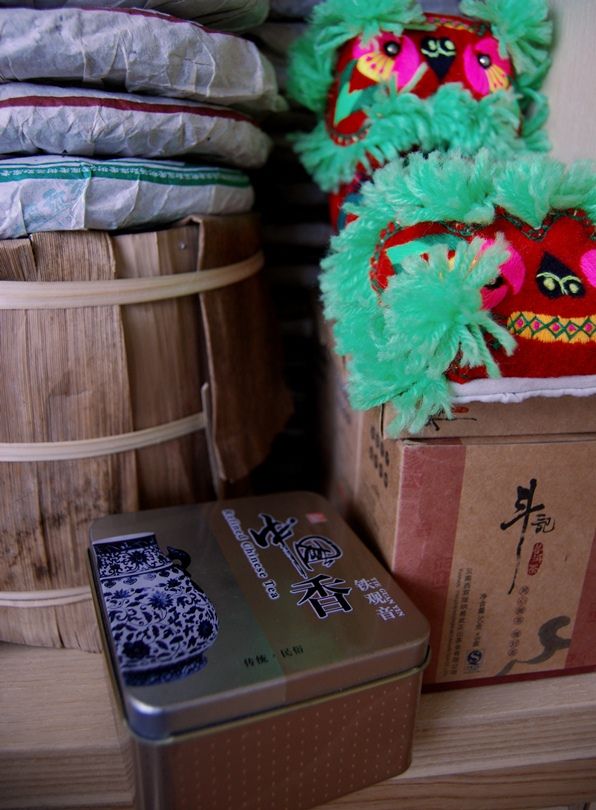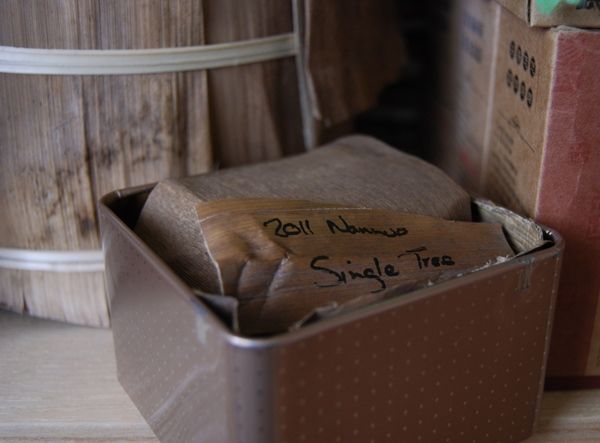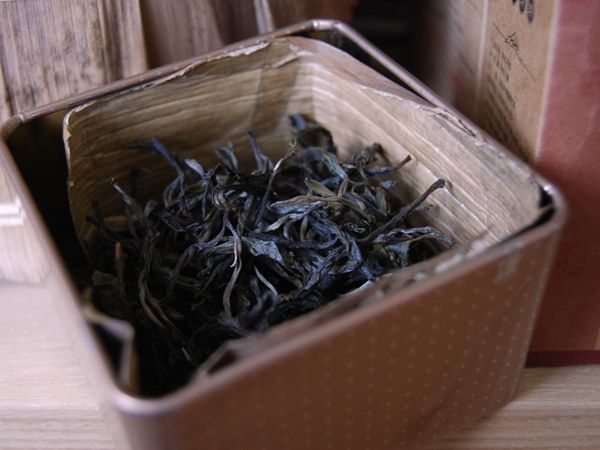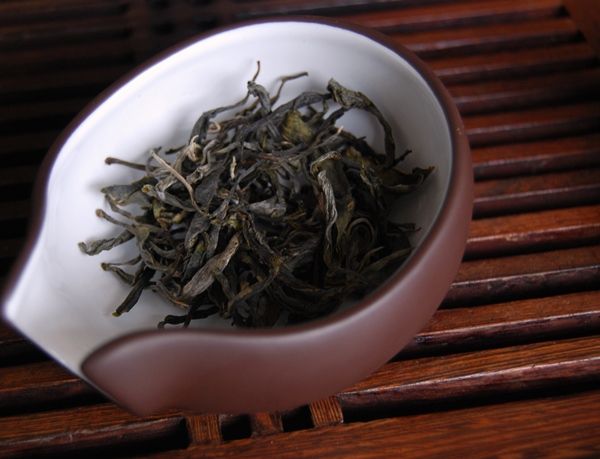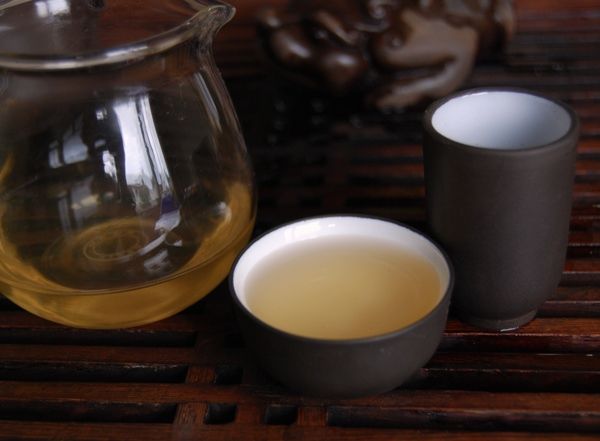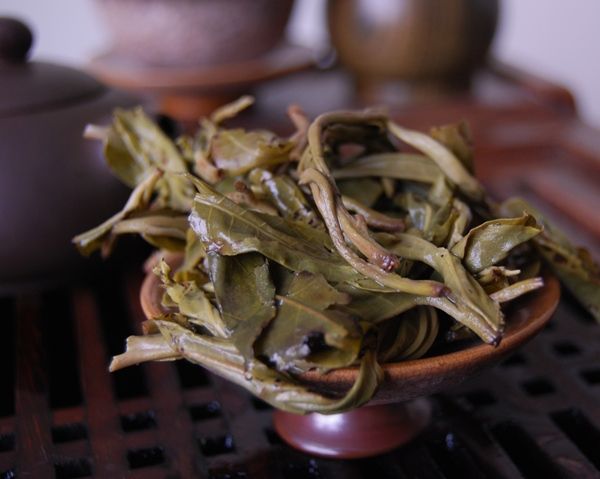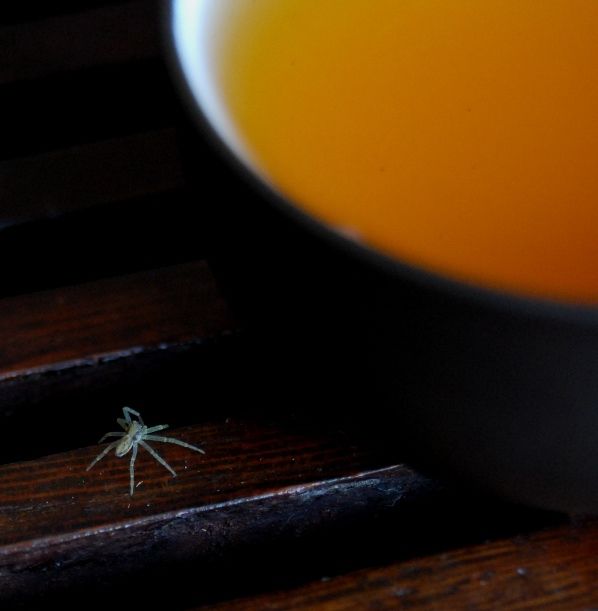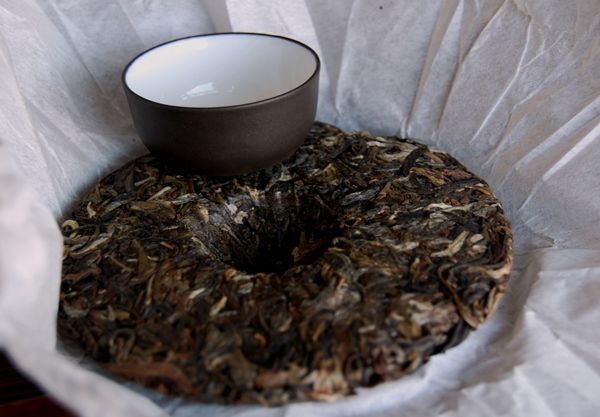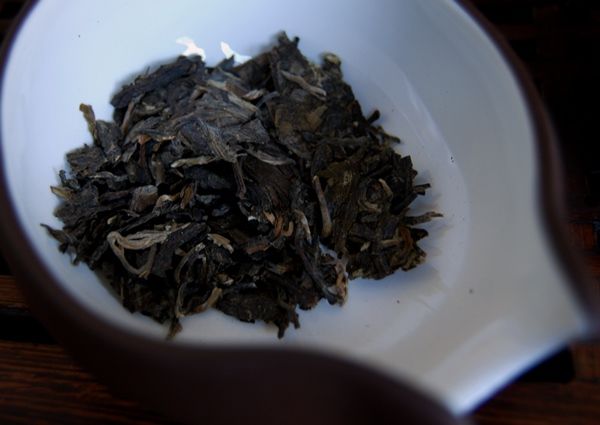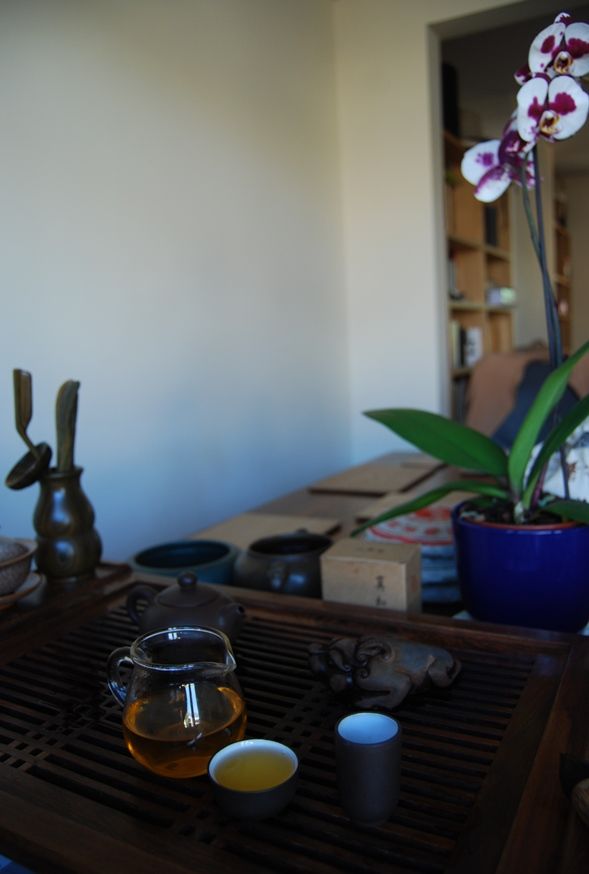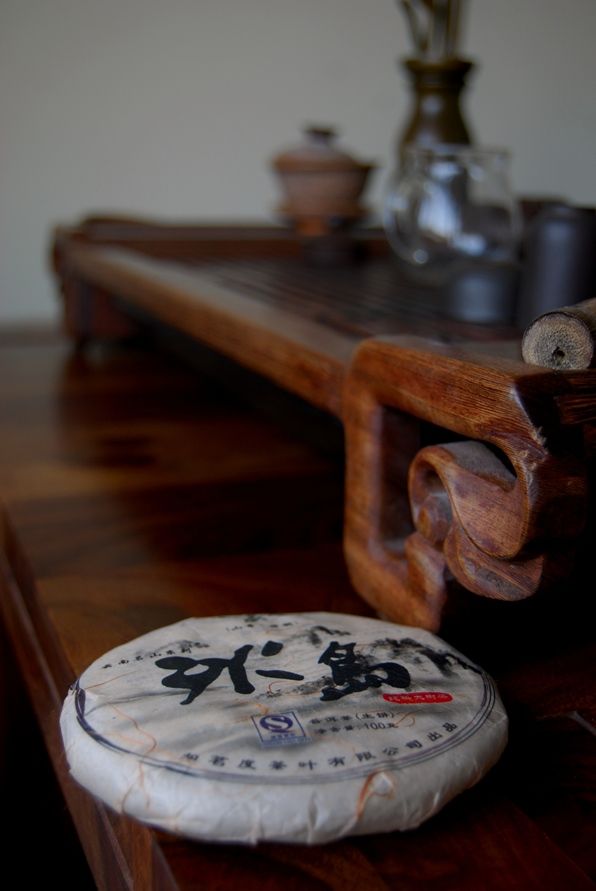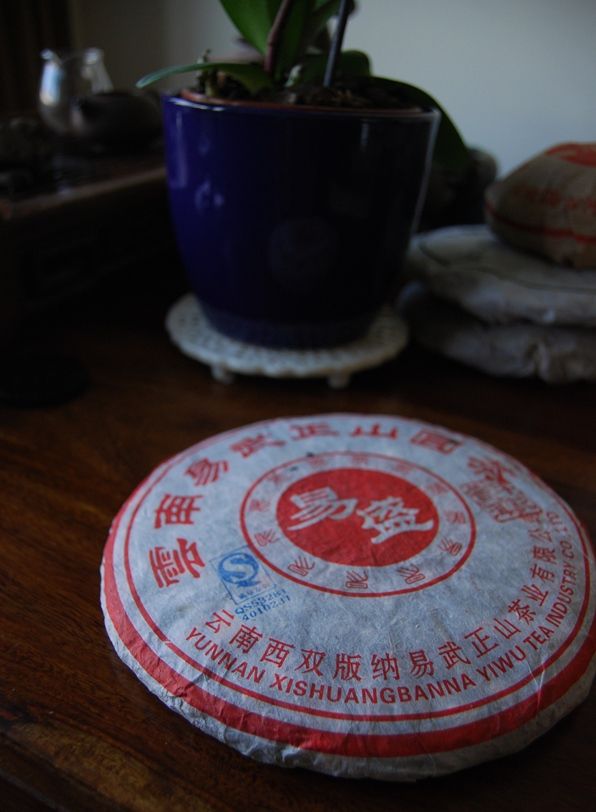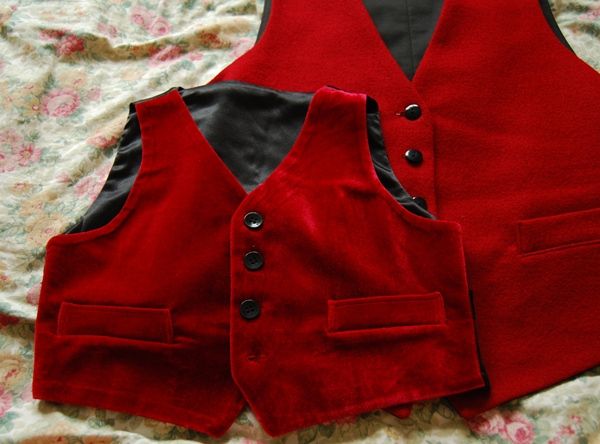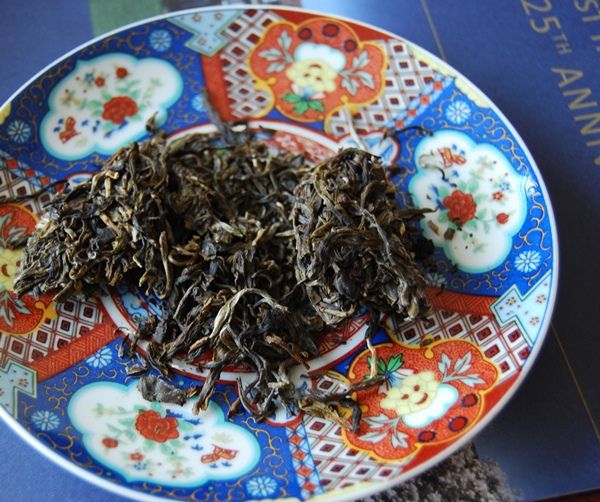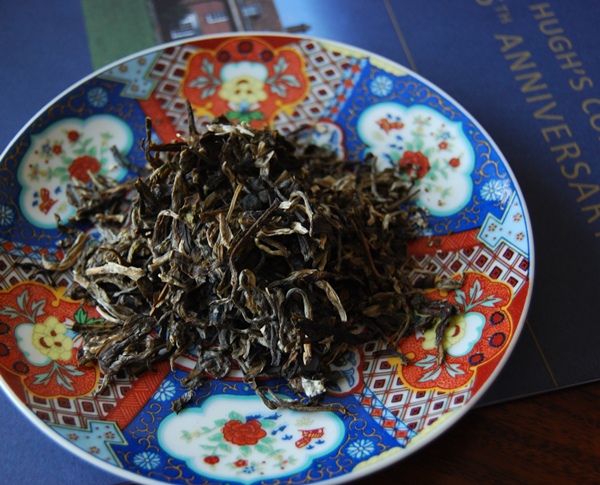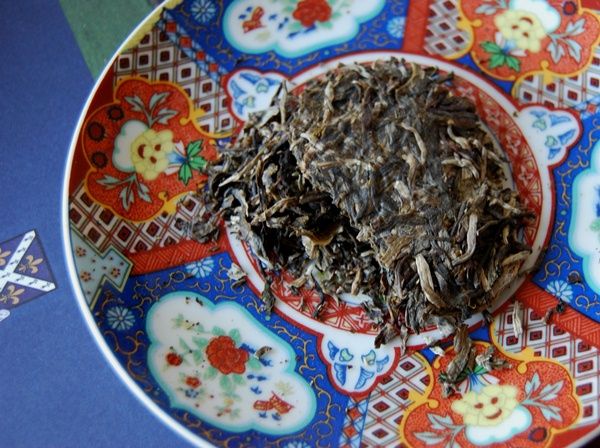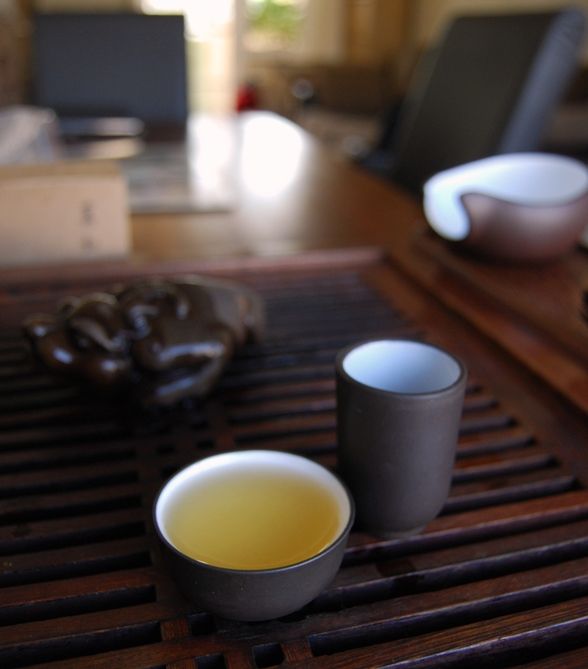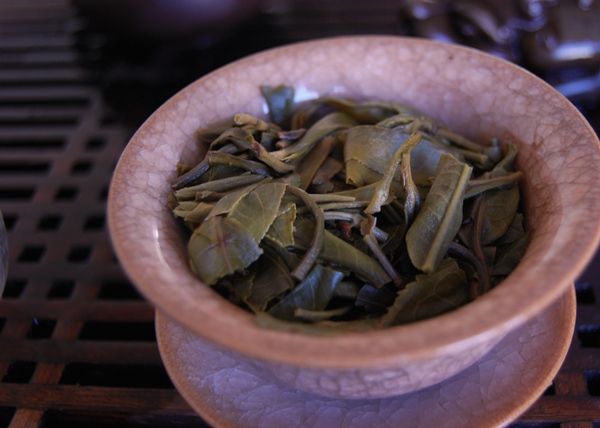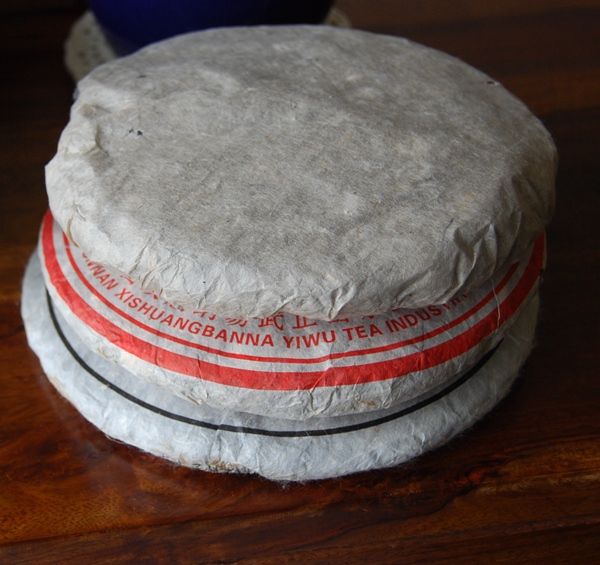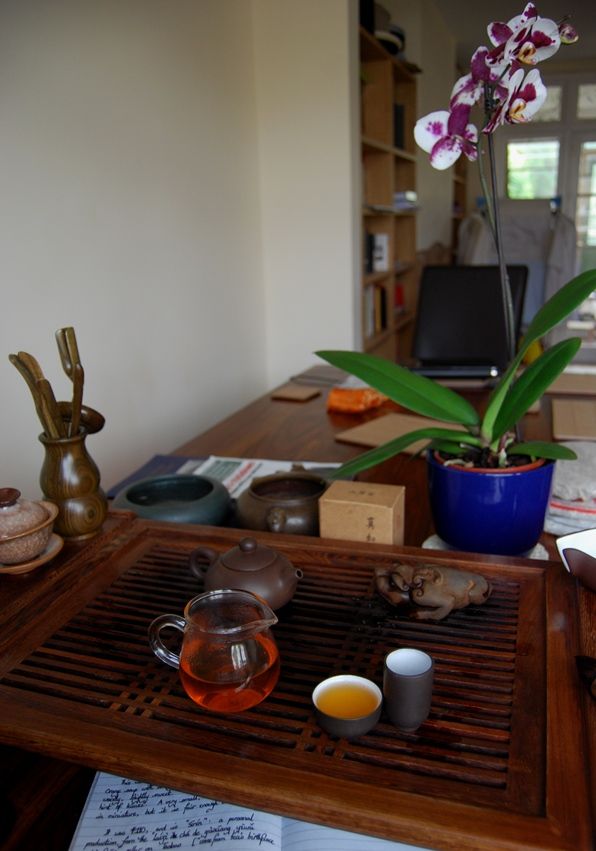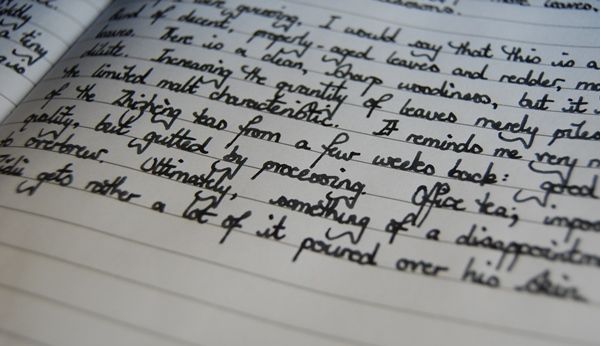Today, four rapid-fire encounters with the remainder of my last batch of samples bought from
Yunnan Sourcing. I enjoyed these over the course of a week or so: one from Hailanghao, two autumnal teas from the YS label, and one "premium" spring tea, also from the YS label.
2010 Hailanghao "Bama Gongchuncha"
Bama Village is in the northern part of Nannuoshan, near the large town of Gelanghe. Scott's
2010 Nannuo came from Yakou Village, in th south. Gongchuncha is "Tribute spring tea", and it is priced at $49/400g. The leaves, shown below are tippy and fresh, while also quite long. In my diary at the time, I wrote "Wonderfully drinkable: sweet, slightly buttery, and smooth." Overall, this is a little less enthralling than Scott's version from the south of the region. It is not at all bad, but becomes green, pine-like, and rather average after a few infusions.
Secondly, we have the
2010 Yunzhiyuan "Pasha Qiuxiang"
...where qiuxiang [ch'ee-oh sh'eeang] means "autumn fragrance", referring to the autumnal picking, which can be less potent than the springtime flush. Mengpashashan, from whence cometh this $27/400g cake, is supposedly the highest point in Xishuangbanna.
Shown below, it has thick leaves which result in a solid yellow soup. It starts out strong, thick, and heavily sweet, with grassy characteristics. Both of my Mengpasha cakes (the
2009 Xizihao and the
2006 Haiwan) are monstrously powerful, with similarly grassy notes. This YS version is by far the easiest-going, and most approachable. In later infusions, it stays smooth, but its character becomes more dilute, and tends towards "brown hay". It is a decent cake at a low price, although the distant, dilute character seems common to many of Scott's autumnal range from 2010, where I suspect the drought may be at fault.
Thirdly, the
2010 Yunzhiyuan "Mangfei Quixiang"
...which is also an autumnal cake. The whole range of qiuxiang cakes is reasonably priced, and this is just $19/400g. Mangfeishan is in Yongde County, in Lincang, near the border with Myanmar. It's one of my favourite locations for pu'ercha. The tippy, small leaves pictured below deliver a big, grain-like soup with some initial smokiness. It is clean and cooling, as are most of Scott's cakes, which testify to his ability to pick decent leaves.
Later on, I wrote that it "takes a turn for the pungenetly green, and its smokiness comes to the fore." Just like the
2010 Yunzhiyuan "Bangma", another Lincang cake from autumn 2010, it seems distant, despite starting well. It has good kuwei, and is suitably inexpensive to consider as a fun cake if you're looking for something to bulk out your shelves, but it is undistinguished.
Finally, the
2010 Yunzhiyuan "Jinggu Yangta"
This is noticeably better than the previous three, being a "premium" spring cake from Scott's own label.
Pictured below, this spring tea, which sells for $27.50/250g, is a "dabai" [big white] variety of tea, different to the usual "daye" [big leaf] pu'ercha varietal. Jinggu is in Simao Prefecture, and this cake was made from Yangtashan leaves.
Typical of daibacha, this has huge leaves which result in a cloud of downy fur being thrown into the air whenever they are disturbed.
The result is a yellow soup with a distinctly creamy texture, common to downy pu'ercha. Clean and cooling, it is a crisp and well-made tea.
I tend not to get too excited about dabeicha, and have suspicions that it might not age well, because it reminds me of large-leaf, downy pu'ercha than tends to empty over time, rather than develop any degree of complexity.
It becomes low and tangy as the infusions pass, not in any way that I particularly appreciate. My diary has, "It doesn't provide the satisfaction of real pu'ercha."
Not a tea to thrill me, but instructive to sample.
This marks the end of the large bag of samples that I bought from Yunnan Sourcing, to catch up after a year or so of absence from my tea-table. It was a decidedly mixed bag, ranging from cheap-but-decent (the qiuxiang autumn cakes) to pricey-yet-sometimes-excellent spring cakes.
I particularly enjoyed the $40/250g
Xikong, the $40/250
Yibang, and the $42/250g
Wangongzhai. I concluded that the rest have been a little hit-and-miss, to my tastes.
It will be interesting to see what 2011 provides...

